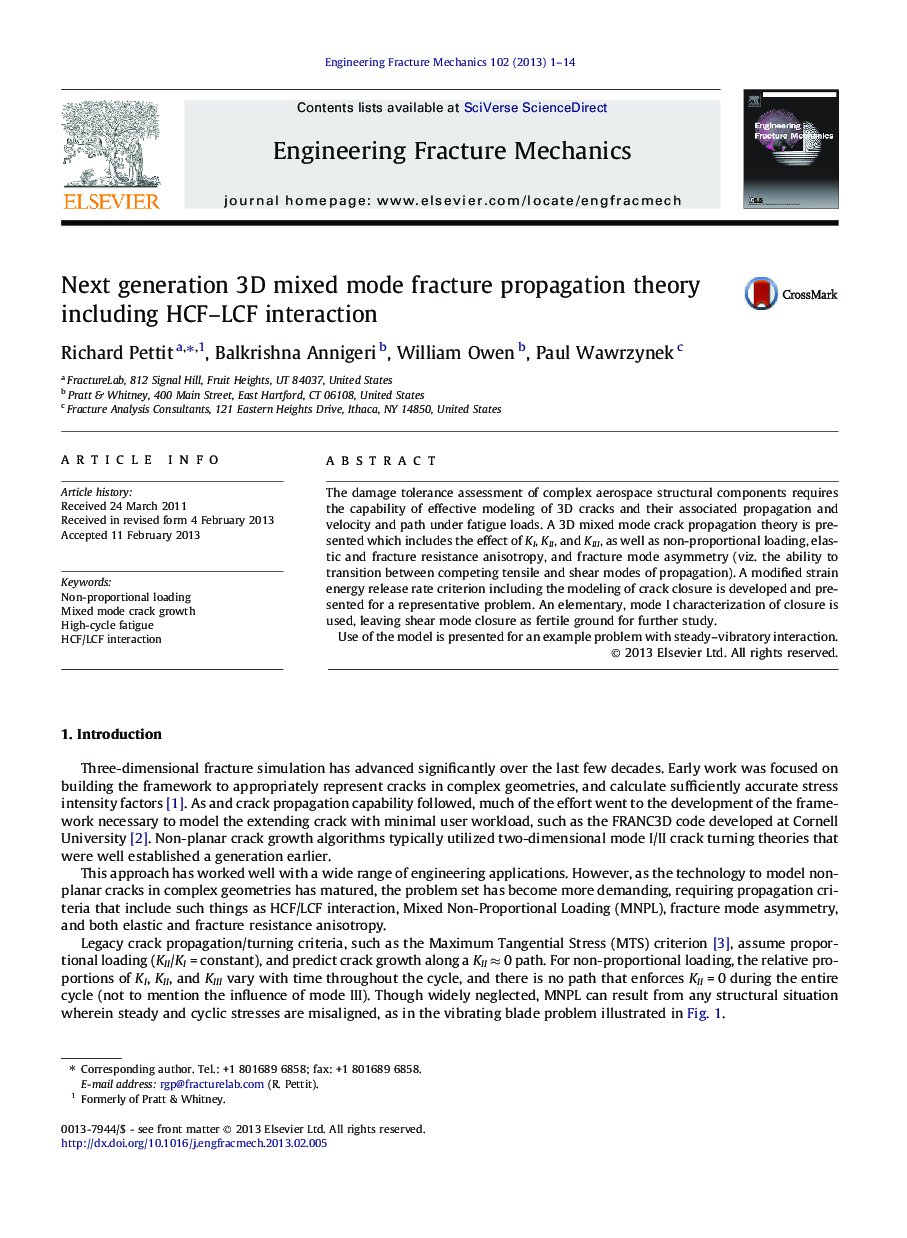| کد مقاله | کد نشریه | سال انتشار | مقاله انگلیسی | نسخه تمام متن |
|---|---|---|---|---|
| 770877 | 1463123 | 2013 | 14 صفحه PDF | دانلود رایگان |

The damage tolerance assessment of complex aerospace structural components requires the capability of effective modeling of 3D cracks and their associated propagation and velocity and path under fatigue loads. A 3D mixed mode crack propagation theory is presented which includes the effect of KI, KII, and KIII, as well as non-proportional loading, elastic and fracture resistance anisotropy, and fracture mode asymmetry (viz. the ability to transition between competing tensile and shear modes of propagation). A modified strain energy release rate criterion including the modeling of crack closure is developed and presented for a representative problem. An elementary, mode I characterization of closure is used, leaving shear mode closure as fertile ground for further study.Use of the model is presented for an example problem with steady–vibratory interaction.
► A method for 3D mixed-mode fatigue crack path/growth-rate prediction is proposed.
► Includes fracture mode asymmetry (transition between dominant growth modes).
► Fracture resistance anisotropy is included and extended to 3D.
► Non-Proportional Loading (NPL) given limited treatment using a closure mechanism.
► NPL 2D test data compares favorably up to shear mode transition.
Journal: Engineering Fracture Mechanics - Volume 102, April 2013, Pages 1–14